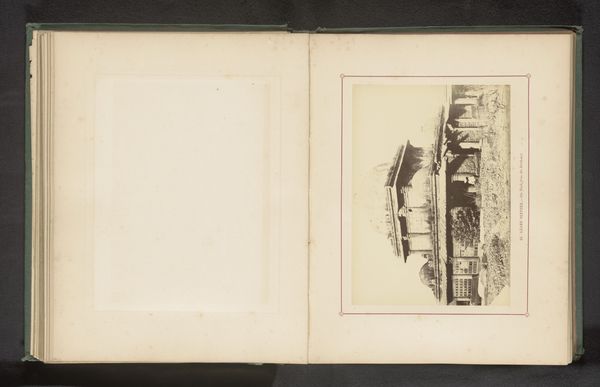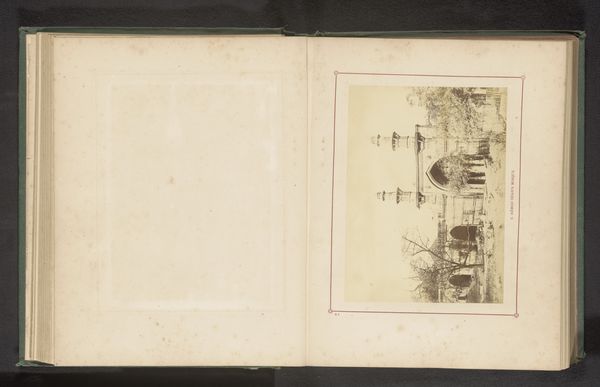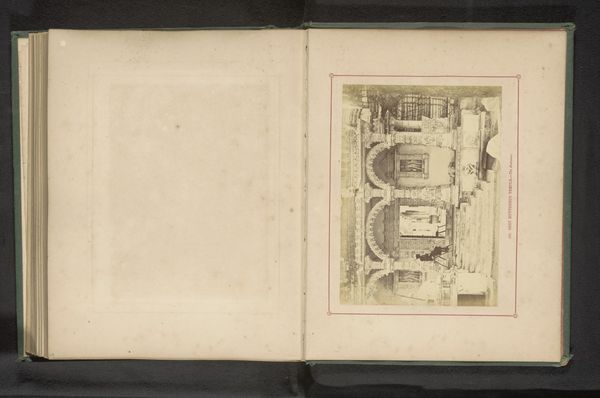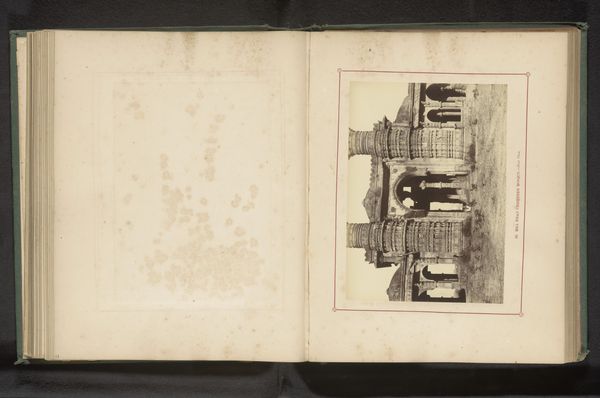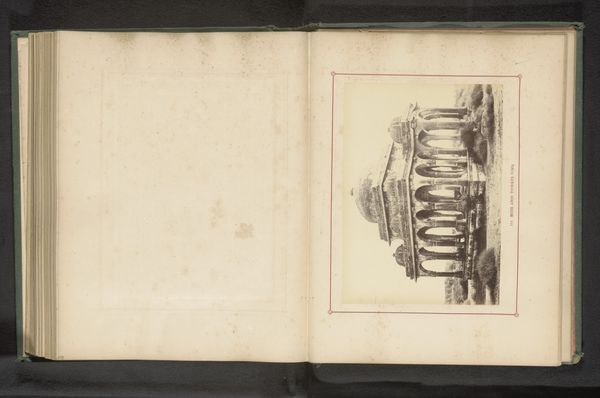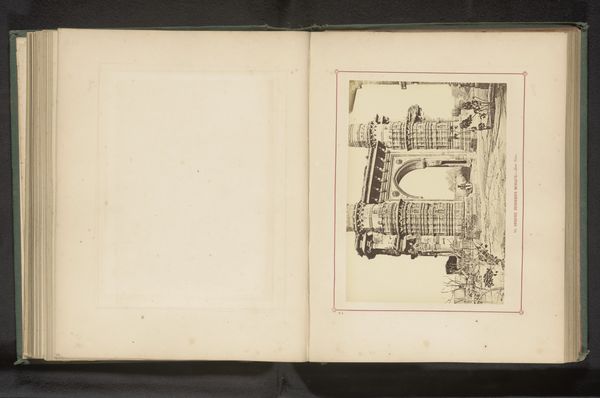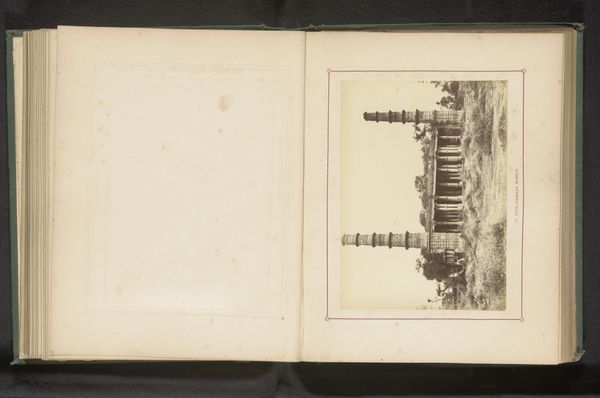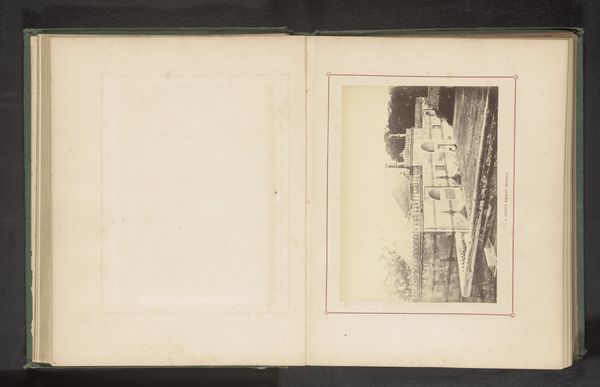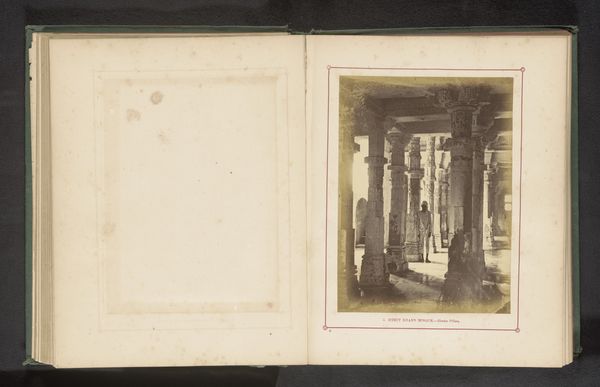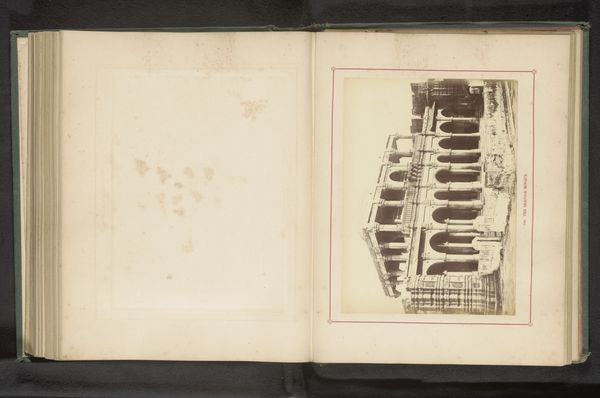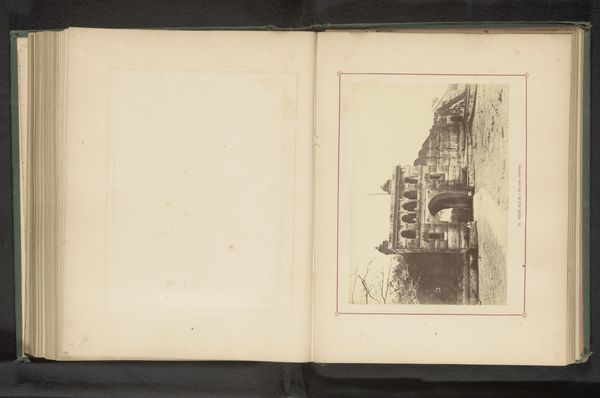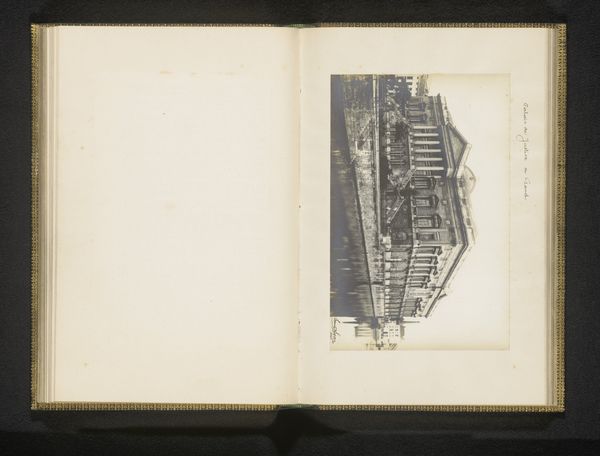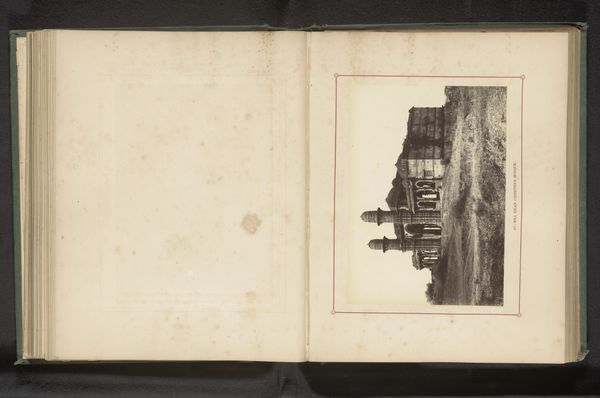
print, photography, albumen-print
# print
#
landscape
#
photography
#
orientalism
#
cityscape
#
islamic-art
#
albumen-print
Dimensions: height 149 mm, width 201 mm
Copyright: Rijks Museum: Open Domain
Editor: We’re looking at a photograph titled “Gezicht op de Malik Alam-moskee in Ahmedabad,” taken before 1866 by Thomas Biggs. It’s an albumen print, so it has a very particular sepia tone. It looks like the structure is in a state of disrepair. How do you see the visual composition here? Curator: Indeed, the albumen print lends a textural richness, yet consider the structural integrity evident in the composition. Observe how the verticality of the mosque's pillars creates a staccato rhythm. The ruins frame a hierarchy. The photographer directs our eye. Notice the geometric harmony with horizontal stratification against a vertical, open sky. Editor: That's a fascinating perspective. I was more focused on the implied decay, the textures of disintegration. Are you saying that I should consider how I am being led by the lens in relation to these ruins and surfaces? Curator: Precisely. Though a ruin, we ought to consider how the interplay of light and shadow, as registered through the albumen process, reveals the intentionality of Biggs in rendering a subject, that for all its crumbling texture, demonstrates through formal geometries a perspective of balance and harmony. Look at the symmetry echoed in the composition; see how it frames our gaze to its vanishing point. Editor: I hadn't really appreciated how actively the composition downplays decay. Are there other formal elements that support that argument? Curator: Note also how the subtle gradations of light within the limited tonal range create depth. The interplay of architectural planes establishes a visual pathway leading us towards an idealized point within the structure, regardless of its present condition. That balance overcomes any reading that favors entropy alone. Editor: This gives me much to reflect on; seeing balance in the frame allows a reading against the grain of initial impressions of decay and dereliction. Curator: Formal analysis encourages just that. Shifting perception reveals how, indeed, aesthetic choices imbue even images of ruins with deeper meanings.
Comments
No comments
Be the first to comment and join the conversation on the ultimate creative platform.
